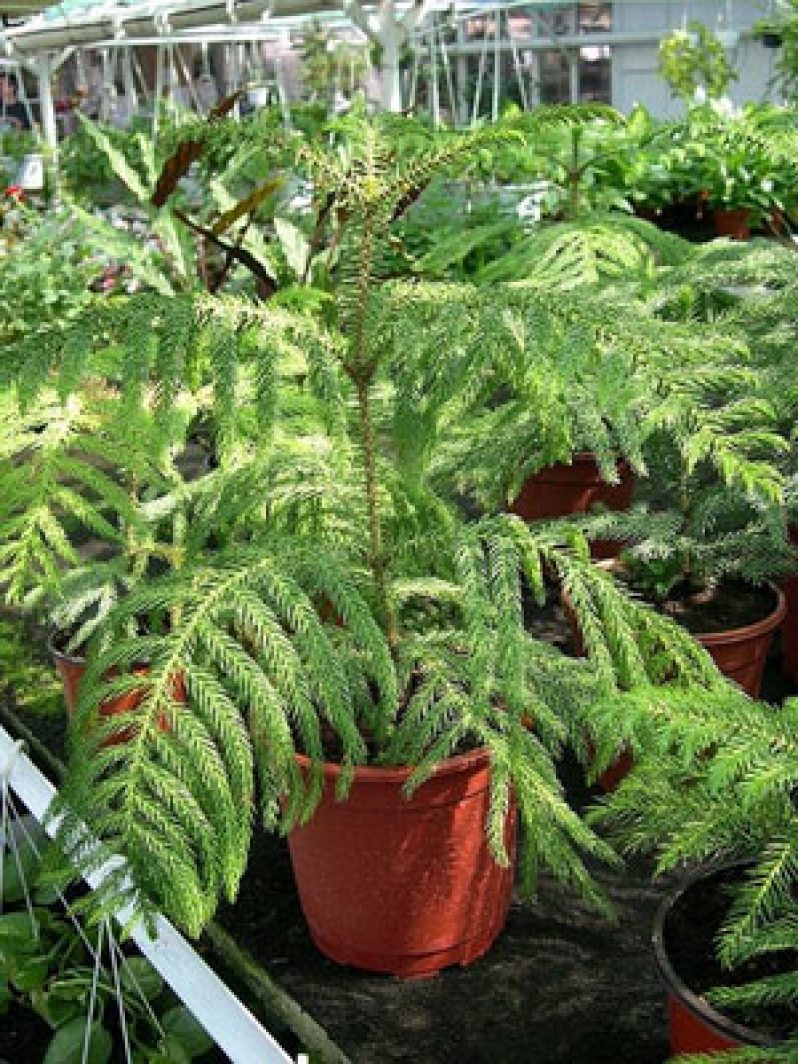THE symmetrical triangular outline and softly flowing texture of its foliage make the Norfolk Island pine one of the most popular living Christmas trees, even though it is a bit expensive and is admittedly a bit hard to find locally.
 The Norfolk Island Pine (Araucaria heterophylla) is a distinctive non-flowering tree or conifer, and is one of the relatively few conifers of the southern hemisphere.
The Norfolk Island Pine (Araucaria heterophylla) is a distinctive non-flowering tree or conifer, and is one of the relatively few conifers of the southern hemisphere.
In the wild, this pine grows to a height of 60 metres (200 feet) with a straight vertical trunk sometimes reaching 3 metres (10 feet) in width, and with symmetrical branches.
As a landscape tree, the Norfolk Island Pine grows ramrod straight, with whorled branches arising at right angles to the main trunk.
These branches swoop down in a graceful arc, thus giving the Pine tree its distinctive pyramidal and picturesque form.
Even though it is a forest giant of the South Pacific, the Norfolk Island Pine can be grown indoors as a small tabletop plant. The size of the pot in which it is planted would determine the size the plant attains.
According to an official of the Horticultural Society of Guyana, plants grown in six-inch pots will usually grow up to about two feet in height, and then remain at that height without any noticeable adverse effects.
If transplanted to an 8-inch pot, the Norfolk Island Pine will grow another foot, and then stop again.
Smaller pots keep the size down, making the pine good for both indoors and outdoors.
The Norfolk Island Pine is native to a small speck of land with the same name in the middle of the South Pacific, about 900 miles east of the eastern bulge of Australia.
Besides its native Norfolk Island, the tree is widely planted in Australia, New Zealand, southern Florida, coastal California, South Texas, Hawaii, coastal Chile and other parts of South America, Honduras and South Africa.
In Hawaii, the tree is also known as the Hawaii Star Pine, and there is a thriving Norfolk Island Pine Christmas tree industry in those islands.
The first European known to have sighted the Norfolk Island Pine was Captain James Cook, who mentioned it on his second voyage to the South Pacific in 1774.
Cook named the island after the Duchess of Norfolk, wife of Edward Howard, 9th Duke of Norfolk (1685-1777).
Cook landed on Norfolk Island and reported on the presence of large quantities of tall, straight trees which appeared to be suitable for use as masts for sailing ships. However, when the Island was occupied in 1788 by transported convicts from Britain, it was found that the Norfolk Island Pine was in fact not resilient enough for that purpose, and the industry was abandoned.
In many countries of the world, Guyana included, Christmas is normally the time of year for the Norfolk Island Pine to shine, both indoors and outdoors.
 Checks with local horticulturalists reveal that the Norfolk Island Pine is not currently available locally for sale.
Checks with local horticulturalists reveal that the Norfolk Island Pine is not currently available locally for sale.
Nevertheless, there are Norfolk Island Pines in the National Park and in the Botanical Gardens. These can easily be cultivated as indoor or outdoor plants, either from cuttings or from seeds.
So if you are not fortunate to have one or two of these beautiful plants in your home or yard, that can be easily rectified, and you can enjoy the Norfolk Island Pine, bedecked with garlands and ornaments, for next Christmas.
For those more fortunate, it is important to note that electric lights have a severe dehydrating effect on the plant, and it therefore should not be bedecked with fairy lights.


.jpg)











